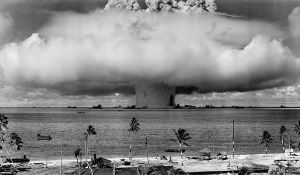Guide to Analytic Techniques for Nuclear Strategy Analysis

Authors | Editors: Bragg. B (NSI, Inc.); Popp, G. (NSI, Inc.); Astorino-Courtois, A. (NSI, Inc.)
Question of Focus
[Q8] What are key analytic approaches that USSTRATCOM planners might use to assess competitors’ behaviors, intentions, and capabilities holistically, including common and divergent national interests? Which are most appropriate for identifying the interrelationships among US and competitor interests and objectives, and for crafting strategies to counter those that undermine US interests and encourage those that satisfy US interests and objectives?
Report Preview
This Guide to Analytic Techniques, developed for SMA’s 2011 Concepts & Analysis Of Nuclear Strategy (CANS) project for USSTRATCOM, is offered in response to the following question from SMA’s 2021 Reachback Effort on Risk of Strategic Deterrence Failure.
What are key analytic approaches that USSTRATCOM planners might use to assess competitors’ behaviors, intentions, and capabilities holistically, including common and divergent national interests? Which are most appropriate for identifying the interrelationships among US and competitor interests and objectives, and for crafting strategies to counter those that undermine US interests and encourage those that satisfy US interests and objectives?
CANS was conducted by the SMA team at USSTRATCOM’s request to assess the utility of alternative analytic techniques for assessing nuclear force attributes and sufficiency under a variety of changed conditions. This guide is one of the CANS deliverables. It was a supplement to the “5D Framework” (named after the five dimensions of the operational context it specifies: policy objective, actor type, phase of conflict, threat, and the international political context) developed during this effort. Its purpose is to enhance deterrence planning and analysis by guiding analysts through the necessary steps for selecting appropriate alternate analytic techniques. The framework directs the analyst through a three-step process beginning with characterizing the issue or question of focus according to adversary, international, and US policy contexts.
This guide includes brief description of each technique, the resources required to implement the analysis, and the utility of the technique for deterrence-related analyses. The intent is not to guide application of each technique, but to provide an introduction thorough enough for a user to determine the utility and practicality of a technique. At the end of each description is a requirements section that discusses the data, time, tools, cost, skill set, and expertise required to implement such a technique. A coding scheme (see Appendix: Requirements Section Coding Specifications) was developed to provide users with a rapid way of comparing different techniques. Techniques selected for this report deal primarily with adversarial behaviors, intentions, and interests.
Comments